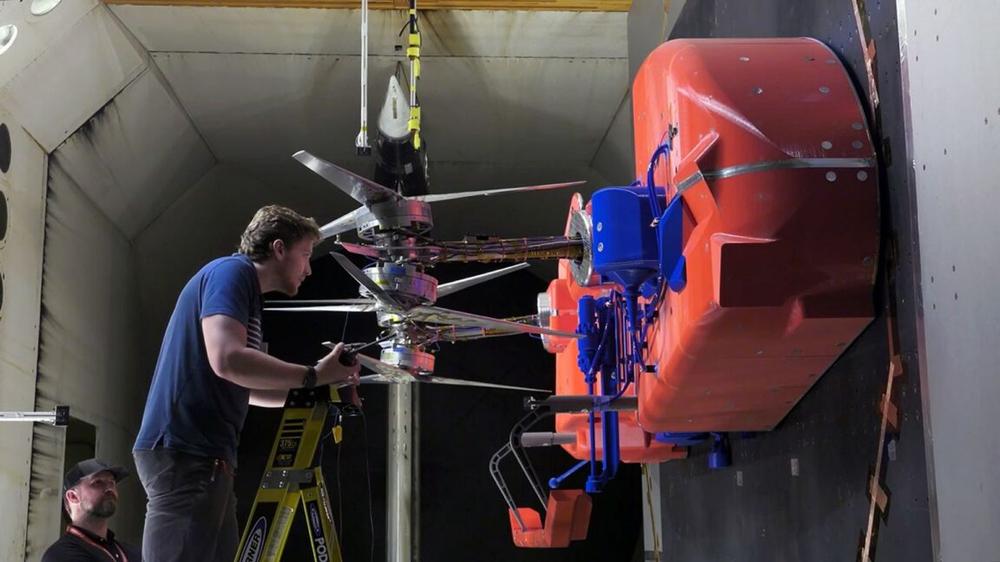A new independent report finds that although NASA's ambitious mission to fly across the surface of Titan is delayed and over budget, the fault is due to the space agency's management rather than the program itself.
Released Tuesday by NASA's Office of Inspector General, the report found that the mission's budget has soared from an initial figure of $850 million upon its selection in 2019 to $3.35 billion today. Additionally, the launch target has slipped from the year 2026 to 2028.
However, the cost increase and schedule slippages are not new. The space agency disclosed these issues nearly a year and a half ago. What is notable about the new report from NASA's inspector general is that the cause of these problems was not a serious technical problem or a flawed design of a vehicle intended to spend years flying across Titan.
Rather, the new report says the primary developer of the vehicle, Johns Hopkins University Applied Physics Laboratory, did not receive the funding promised in early years and was directed by NASA to undergo several lengthy "replans" of the mission, in which the overall plan is redone and reviewed.
"The cost increase and schedule delay were in large part the result of NASA directing APL to conduct four replans prior to Dragonfly entering the Implementation Phase," the report states.
These changes were necessitated by the onset of the COVID-19 pandemic, as well as the crunch NASA faced to get other missions ahead of Dragonfly completed. Additionally the report cited supply-chain issues, as well as NASA's own uncertainty about the budget it would receive from Congress.
So how is Dragonfly doing now?
In recent years the Dragonfly mission has started to receive the funding and resources promised when NASA selected the mission six years ago. So how is it doing?
"The Dragonfly team is killing it," said Bobby Braun, who is head of APL's Space Exploration Sector, in an interview. "Probably the best part of my day is watching that team hit their milestones."
Both the spacecraft's hardware and software are progressing well, he said. Braun expressed confidence that the spacecraft is "on track" for a July 2028 launch date on a Falcon Heavy rocket. NASA confirmed this in a new update this week. On this timeline the spacecraft would arrive at Saturn's largest moon, Titan, in 2034.
This is a challenging mission for a number of reasons, beginning with getting down to the surface. Because Titan has a thick atmosphere, it will take about 90 minutes for the spacecraft to descend. "Curiosity had 7 minutes of terror when it landed on Mars," Braun said. "We're going to have 90 minutes of terror on Titan."
Unlike Mars, where there were multiple orbiters to collect high-resolution surface data about potential landing sites, NASA only has imagery from the Cassini spacecraft that explored the Saturnian system from 2004 to 2017. Fortunately, this spacecraft deployed a small European probe, Huygens, that landed on Titan in 2005 and survived for about an hour. Dragonfly will draw on the experiences and atmospheric data collected by Huygens.
Among the key technologies on Dragonfly is an advanced Terrain Relative Navigation system to survey the surface and identify hazards. This will be useful not just during the initial landing but for subsequent flights as the rotocraft makes 20-minute jaunts across the surface, traveling a few kilometers at a time. Between each autonomous flight, the spacecraft will recharge its batteries using a radioisotope thermoelectric generator, or RTG power system. Dragonfly will need this power to transmit data directly from the surface of Titan back to Earth, as there will be no relay spacecraft in orbit around the moon.
A primordial soup
Scientists are greatly intrigued by Titan because it is one of the few bodies in the Solar System with a surface pressure similar to Earth. The average temperature at the surface is very cold, -179.5° Celsius (-290° Fahrenheit), but there are lakes of Methane at the poles. Beneath sandy dunes at the equator, which are rich with complex carbon molecules, lies a crust of water ice perhaps 100 km thick.
In an interview, Dragonfly Principal Investigator Elizabeth "Zibi" Turtle told Ars the vehicle's mobility will allow it to investigate areas in which this ice may have been liquid in the past. The spacecraft will explore impact craters where water may have existed in liquid form for thousands of years after meteors struck and imparted a significant amount of kinetic energy.
"Titan’s equatorial region has these large seas of sand dunes, but the sand has an organic composition, and it overlies this primordial water ice crust," Turtle said.
What might have existed there? What exists there today?
This will be NASA's first landing on another ocean world, with the primary objective of searching for the chemical building blocks of life. Areas of Titan, in the wake of impacts, would be much like a primordial Earth when life started here billions of years ago.
Is it 2034 yet?

 Police respond to report of woman screaming only to find a goat
Police respond to report of woman screaming only to find a goat